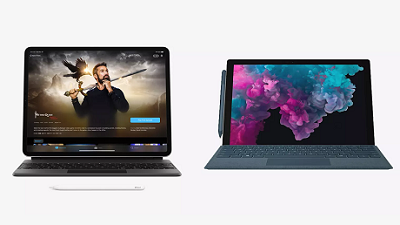|
FBI's Internet Crime Complaint Center (IC3) today warned of an ongoing phishing campaign delivering spam that uses fake government economic stimulus checks as bait to steal personal information from potential victims. "Look out for phishing emails asking you to verify your personal information in order to receive an economic stimulus check from the government," IC3's alert says. "While talk of economic stimulus checks has been in the news cycle, government agencies are not sending unsolicited emails seeking your private information in order to send you money." The FBI issued another warning about a phishing scam impersonating the Internal Revenue Service (IRS) in 2008 and trying to steal taxpayers' personal information using economic stimulus checks as bait. Similar campaigns might also ask potential victims for donations to various charities, promise general financial relief and airline carrier refunds, as well as try to push fake COVID-19 cures, vaccines, and testing kits. Other active phishing attacks are also taking advantage of the COVID-19 pandemic to infect victims with malware and harvest their personal info via spam impersonating the Centers for Disease Control and Prevention (CDC) and other similar organizations like the World Health Organization (WHO). The FBI also says that scammers are also trying to sell products claiming to prevent, treat, diagnose, or cure the COVID-19 disease, as well counterfeit sanitizing products and personal protective equipment (PPE), including but not limited to N95 respirator masks, gloves, protective gowns, goggles, and full-face shields. To avoid getting scammed by fraudsters, infected with malware, or have your personal information stolen, IC3 recommends not clicking on links or open attachments sent by people you don't know and to always make sure that the websites you visit are legitimate by typing their address in the browser instead of clicking hyperlinks. You should also never provide sensitive information like user credentials, social security numbers, or financial data when asked over email or as part of a robocall. To make it easier to spot phishing and scam attempts, you can also check the domain of websites you visit for misspellings or for the wrong top-level domain (TLD) at the end of the site's URL — .com or .net instead of .gov, the sponsored top-level domain (sTLD) used by US government sites. You can read the full FBI Warning on OUR FORUM. Apple has spent the past 10 years trying to convince everyone that the iPad and its vision of touch-friendly computing is the future. The iPad rejected the idea of a keyboard, a trackpad, or even a stylus, and Apple mocked Microsoft for taking that exact approach with the Surface. “Our competition is different, they’re confused,” said Apple CEO Tim Cook as he stood on stage to introduce the new Macs and iPads six years ago. “They chased after netbooks, now they’re trying to make PCs into tablets and tablets into PCs. Who knows what they will do next?” Every iPad has transformed into a Surface in recent years, and as of this week, the iPad Pro and Surface Pro look even more alike. Both have detachable keyboards, adjustable stands, trackpads, and styluses. With iPadOS getting cursor and mouse support this week, Apple has finally admitted that Microsoft was right about tablets. Let me explain why. Microsoft’s return to tablets was a rough ride and far from perfect. Bill Gates tried to convince the world that tablets would be a thing all the way back in 2002, but the hardware and software were far too primitive back then. The software maker eventually introduced the Surface RT alongside Windows 8 in 2012 as a clear response to the iPad, but it had an ARM-powered desktop operating system that didn’t support your favorite apps. It was slightly confusing, but Microsoft’s tablet principles were clear at the time. “Something is different about tablets, people still do desire a physical keyboard,” wrote former Windows chief Steven Sinofsky in a detailed blog post about Windows 8 back in 2012. “Even in the absence of software like Microsoft Office, the reality is that when you need to write more than a few quick lines of text, you yearn for something better than on-screen typing ... People benefit from the highly accurate, reliable, and fast user input enabled by a physical keyboard, and we think an OS and its apps should not compromise when one is available.” The message was clear: touch-based computing would be a first-class input for Windows 8 but not the only way to use the operating system. Microsoft insisted you needed a mouse for precision, a keyboard for typing, and a stylus for taking notes or drawing. These basic foundations led to the Surface Pro, with its variety of inputs to suit different needs. Read more of Apple's admission on OUR FORUM. If you told to be back in 2013 that this generation would see first-person shooters return to frenetic retro experiences as tongue-in-cheek was they were colorful, I’d tell you to stop making shit up. Doom 2016 was the start of realizing that dream: the return to form for id Software’s iconic “daddy-of-first-person-shooters” was also the return of an often sidelined method of presenting an FPS. If you thought that 2016’s return to the demon-infested UAC was the true return to Doom, you haven’t played anything like Doom Eternal. While four years ago we were treated to a smidge of what the series could be again – complete with gruesome combat and pumping heavy metal – Eternal’s amp has been cranked up not just to eleven, but away past it. While the last outing of the demon-massacring Doom Slayer ended with the raging marine being sent back to Hell, Eternal instead begins with everyone’s favorite angry-man tackling the rise of the demon horde on Earth. It begins immediately: after steadily shooting your way through a few linear paths, the open combat arenas begin to show their antsy faces. Eternal’s first combat arena is by sure it’s smallest, but it makes a hectic first impression. In comparison to its older brother, this beginning section feels like a mid-game gore nest from Doom 2016. There are imps, zombie soldiers and even an Anachnotron to deal with. For the beginning of a game, Eternal holds no punches and as the game continues its arenas only get bigger, more populated and tougher. That’s not to say that Doom Eternal ever becomes too difficult. We played through the entire campaign on Ultra-Violence, this series’ version of hard mode. As the horde of demon foes expands to include Pinkies, Mancubi, Cacodemons, Tyrants, Archvilles and more, your arsenal of weapons will expand alongside them. As you speedily skate out of the training level, Doom’s combat becomes an eloquent display of ultra-violent gunplay amid grotesque homogenized environments that see their base design overwrought by the unstoppable infection of Hell. The strong core of 2016 lays the unshakable combat foundation that Eternal gleefully builds upon to craft the best shooter this generation has seen. Each combat arena no longer feels like a beautifully choreographed dance; each fight is more akin to a glorious display of freeform combat parkour as you hastily rush to change your direction and approach in a split second. Your core movements of double jumps, mantling, boost-dodging, wall-climbing, and monkey-bar-swinging are constantly in use as you skate around vast demonic warzones and blast away at the ever-oncoming danger. Every gun, from shotgun to plasma rifle to rocket launcher, shreds away the flesh of your foes. Every bullet that blasts against the hardened flesh of the demons takes away a chunk of its target. Eventually, as larger targets with more health take center stage, their bodies become horrifying walking carcasses. It’s a gruesome, barbarous addition that never needed to be added, but it makes combat so much more visceral. There's more to this review posted on OUR FORUM.
|
Latest Articles
|


